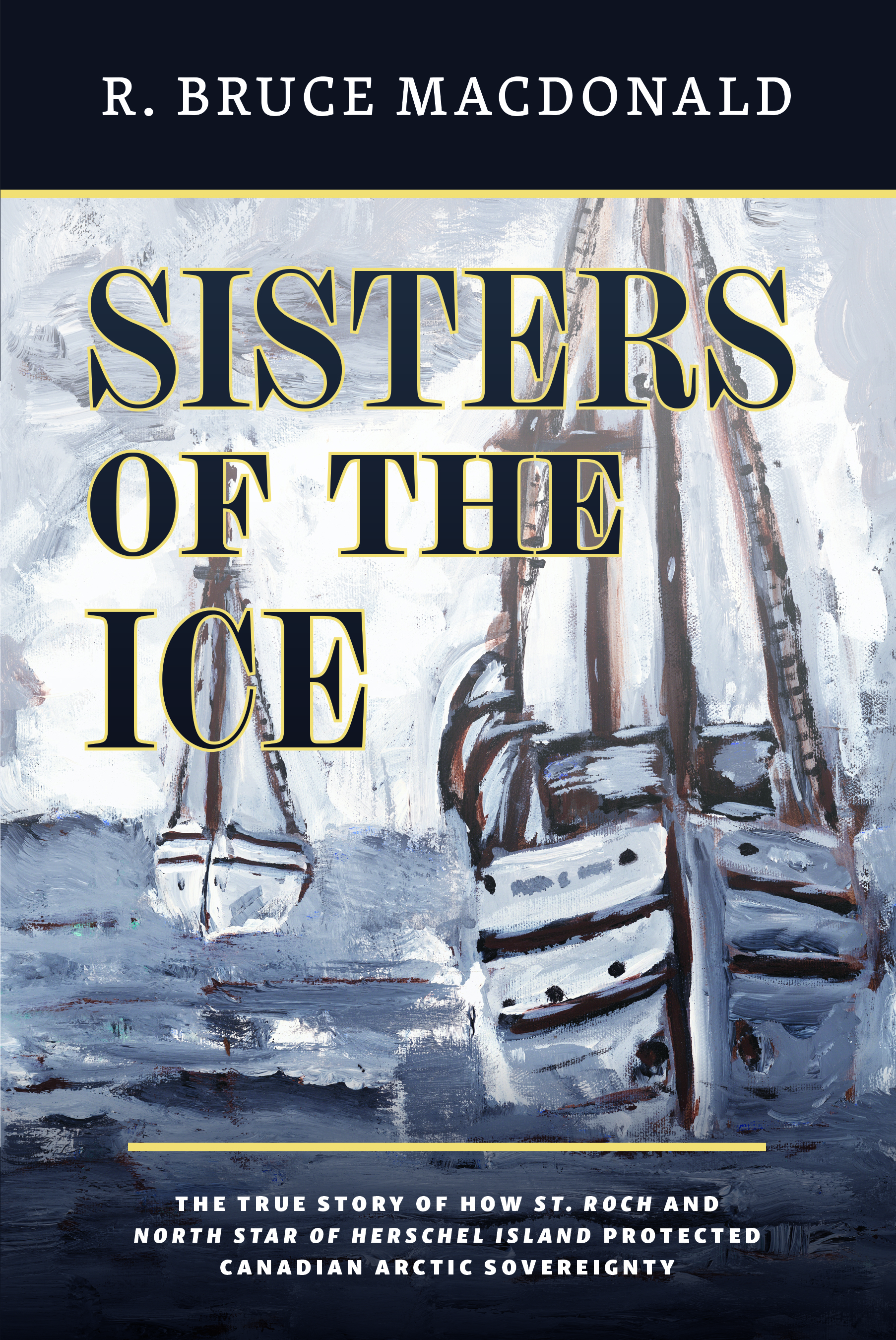Sisters of the Ice

Sisters of the Ice: The True Story of How St. Roch and North Star of Herschel Island Protected Canadian Arctic Sovereignty
by R. Bruce Macdonald
Harbour Publishing,
160 pages, $19.95
“If these hulls could talk....” That’s what popped to mind as I picked up R. Bruce Macdonald’s new book on two vessels that loom large in the story of the Canadian Arctic.
One ship, the St. Roch, made history in 1940–42 as the first vessel to travel the Northwest Passage west to east and later, in 1950, as the first to circumnavigate North America. The other ship, North Star of Herschel Island — built in 1935 for Inuvialut fur traders — also acted as a vital transportation link for the Indigenous inhabitants of Herschel Island, which lies a few kilometres off the northern coast of Yukon Territory.
Macdonald, the author of Sisters of the Ice, is also the current owner of the North Star of Herschel Island. In his book, he details the often-wild history of the western Arctic region, which at one time was the nexus of a major international whaling trade. At its peak, the region’s whaling fleet counted fifteen ships carrying more than five hundred men from around the world. When the crewmen weren’t at sea, they often made harbour at Herschel Island, where they drank, scuffled, caroused, and generally disrupted the lives of the Inuvialut people of the region.
Macdonald explains how the St. Roch, a Royal Canadian Mounted Police schooner, was tasked in 1928 with carrying officers and supplies to the Arctic in an effort to impose Canadian law as well as to assert Canada’s sovereignty over the region. The St. Roch operated in the Arctic until 1954. He also recounts the role the North Star of Herschel Island played in helping to keep the Canadian Arctic out of American and Russian hands.
Briskly written, the book is an engaging look at a fascinating period of Canadian history. With a sufficient selection of photographs, Sisters of the Ice offers much of interest to readers of maritime, fur trade, and Indigenous histories.
“If these hulls could talk....” That’s what popped to mind as I picked up R. Bruce Macdonald’s new book on two vessels that loom large in the story of the Canadian Arctic.
One ship, the St. Roch, made history in 1940–42 as the first vessel to travel the Northwest Passage west to east and later, in 1950, as the first to circumnavigate North America. The other ship, North Star of Herschel Island — built in 1935 for Inuvialut fur traders — also acted as a vital transportation link for the Indigenous inhabitants of Herschel Island, which lies a few kilometres off the northern coast of Yukon Territory.
Macdonald, the author of Sisters of the Ice, is also the current owner of the North Star of Herschel Island. In his book, he details the often-wild history of the western Arctic region, which at one time was the nexus of a major international whaling trade. At its peak, the region’s whaling fleet counted fifteen ships carrying more than five hundred men from around the world. When the crewmen weren’t at sea, they often made harbour at Herschel Island, where they drank, scuffled, caroused, and generally disrupted the lives of the Inuvialut people of the region.
Macdonald explains how the St. Roch, a Royal Canadian Mounted Police schooner, was tasked in 1928 with carrying officers and supplies to the Arctic in an effort to impose Canadian law as well as to assert Canada’s sovereignty over the region. The St. Roch operated in the Arctic until 1954. He also recounts the role the North Star of Herschel Island played in helping to keep the Canadian Arctic out of American and Russian hands.
Briskly written, the book is an engaging look at a fascinating period of Canadian history. With a sufficient selection of photographs, Sisters of the Ice offers much of interest to readers of maritime, fur trade, and Indigenous histories.
Themes associated with this article
Advertisement




